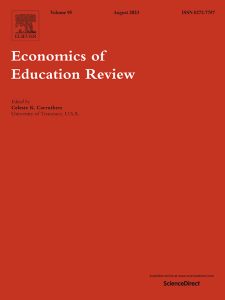Are separate classrooms inherently unequal?
The effect of within-school sorting on the socioeconomic test score gap in Hungary
Zoltán Hermann, Hedvig Horváth, Dorottya Kisfalusi
Economics of Education Review – Volume 103, December 2024
Highlights
- Within-school sorting on socioeconomic status is prevalent in Hungary.
- Within-school sorting widens socioeconomic test score inequalities.
- Sorting harms low-status students, while high-status students gain much less, if anything.
- Within-school reallocation of educational resources is a potential underlying mechanism.
Abstract
This study investigates whether within-school sorting increases socioeconomic test score inequalities. Using universal test score data on 6th– and 8th-grade students in Hungary, we document the extent of within-school sorting in an institutional context where sorting based on ability or prior achievement is rare. We identify sorting schools as schools that systematically assign students with low and high socioeconomic status into different classrooms within the school. Then, exploiting school fixed effects and quasi-exogenous variation in sorting induced by enrollment and class size rules, we show that sorting has a significant and economically meaningful effect on test score inequalities between students from different socioeconomic backgrounds. Sorting harms low-status students, while high-status students gain much less, if anything, from attending sorting schools. We attribute our findings to the within-school reallocation of educational resources and differences in educational practices.
Keywords: Achievement gap, Inequalities, Non-merit-based sorting, Segregation, Within-school sorting
JEL codes: I21, I24




